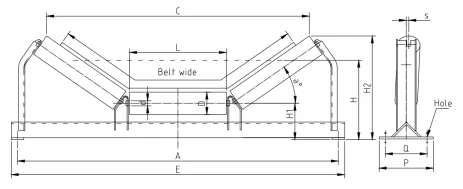 Afrikaans
Afrikaans  Albanian
Albanian  Amharic
Amharic  Arabic
Arabic  Armenian
Armenian  Azerbaijani
Azerbaijani  Basque
Basque  Belarusian
Belarusian  Bengali
Bengali  Bosnian
Bosnian  Bulgarian
Bulgarian  Catalan
Catalan  Cebuano
Cebuano  Corsican
Corsican  Croatian
Croatian  Czech
Czech  Danish
Danish  Dutch
Dutch  English
English  Esperanto
Esperanto  Estonian
Estonian  Finnish
Finnish  French
French  Frisian
Frisian  Galician
Galician  Georgian
Georgian  German
German  Greek
Greek  Gujarati
Gujarati  Haitian Creole
Haitian Creole  hausa
hausa  hawaiian
hawaiian  Hebrew
Hebrew  Hindi
Hindi  Miao
Miao  Hungarian
Hungarian  Icelandic
Icelandic  igbo
igbo  Indonesian
Indonesian  irish
irish  Italian
Italian  Japanese
Japanese  Javanese
Javanese  Kannada
Kannada  kazakh
kazakh  Khmer
Khmer  Rwandese
Rwandese  Korean
Korean  Kurdish
Kurdish  Kyrgyz
Kyrgyz  Lao
Lao  Latin
Latin  Latvian
Latvian  Lithuanian
Lithuanian  Luxembourgish
Luxembourgish  Macedonian
Macedonian  Malgashi
Malgashi  Malay
Malay  Malayalam
Malayalam  Maltese
Maltese  Maori
Maori  Marathi
Marathi  Mongolian
Mongolian  Myanmar
Myanmar  Nepali
Nepali  Norwegian
Norwegian  Norwegian
Norwegian  Occitan
Occitan  Pashto
Pashto  Persian
Persian  Polish
Polish  Portuguese
Portuguese  Punjabi
Punjabi  Romanian
Romanian  Russian
Russian  Samoan
Samoan  Scottish Gaelic
Scottish Gaelic  Serbian
Serbian  Sesotho
Sesotho  Shona
Shona  Sindhi
Sindhi  Sinhala
Sinhala  Slovak
Slovak  Slovenian
Slovenian  Somali
Somali  Spanish
Spanish  Sundanese
Sundanese  Swahili
Swahili  Swedish
Swedish  Tagalog
Tagalog  Tajik
Tajik  Tamil
Tamil  Tatar
Tatar  Telugu
Telugu  Thai
Thai  Turkish
Turkish  Turkmen
Turkmen  Ukrainian
Ukrainian  Urdu
Urdu  Uighur
Uighur  Uzbek
Uzbek  Vietnamese
Vietnamese  Welsh
Welsh  Bantu
Bantu  Yiddish
Yiddish  Yoruba
Yoruba  Zulu
Zulu conveyor head pulley
Understanding the Conveyor Head Pulley Essential for Material Handling Systems
Conveyor systems are vital in various industries for the efficient movement of materials. At the heart of many conveyor systems is a pivotal component known as the head pulley. This critical element plays a significant role in the operation and functionality of conveyor belts, influencing performance and reliability.
A conveyor head pulley is located at the end of a conveyor belt system, typically the discharge or loading end. It is designed to redirect and support the belt as it moves materials from one point to another. Generally, head pulleys are equipped with a drive motor that powers the belt, creating tension necessary for movement. The correct functioning of a head pulley ensures that the materials are transported smoothly and efficiently, reducing the risk of jams or spills that could interrupt operations.
Head pulleys serve several key functions. Firstly, they provide the necessary tension to keep the conveyor belt taut. Proper tensioning is crucial for preventing slippage, which can lead to wear and tear on the belt, ultimately resulting in increased maintenance costs and downtime. Secondly, head pulleys help in controlling the orientation and tracking of the belt. Properly aligned belts minimize wear on the edges and extend the lifespan of the conveyor system.
conveyor head pulley

The design of a conveyor head pulley can vary considerably depending on the specific application and material being transported. There are variations, such as lagged, crowned, or flat pulleys, each with its unique benefits. For example, lagged pulleys have a surface treatment that increases friction, making them ideal for heavy loads prone to slipping. On the other hand, crowned pulleys are designed with a slight arch, helping to steer the belt back to the center and ensuring proper tracking throughout its operation.
In addition to their design, head pulleys can be constructed from various materials, including steel, aluminum, or composite materials. The choice of material often depends on the environment or specific application requirements. For instance, pulleys in corrosive environments may be made from stainless steel to enhance durability.
Preventative maintenance of head pulleys is crucial for ensuring the longevity and efficiency of the conveyor system. Regular inspections can help identify wear on the pulleys or the conveyor belt itself. Additionally, properly maintaining the bearings and lubrication systems associated with head pulleys is essential to prevent mechanical failures that can lead to costly downtimes.
In conclusion, the conveyor head pulley is a fundamental component of conveyor systems that significantly contributes to their efficiency and effectiveness. Understanding its functions, design variations, and maintenance requirements is essential for operators and engineers working in material handling applications. By ensuring that head pulleys are well-maintained and appropriately selected for specific tasks, organizations can optimize their conveyor systems, resulting in improved productivity and lower operational costs. As industries continue to evolve and demand more efficient material handling solutions, the importance of the conveyor head pulley will remain paramount in achieving these goals.
-
Revolutionizing Conveyor Reliability with Advanced Rubber Lagging PulleysNewsJul.22,2025
-
Powering Precision and Durability with Expert Manufacturers of Conveyor ComponentsNewsJul.22,2025
-
Optimizing Conveyor Systems with Advanced Conveyor AccessoriesNewsJul.22,2025
-
Maximize Conveyor Efficiency with Quality Conveyor Idler PulleysNewsJul.22,2025
-
Future-Proof Your Conveyor System with High-Performance Polyurethane RollerNewsJul.22,2025
-
Driving Efficiency Forward with Quality Idlers and RollersNewsJul.22,2025





























